It all started with an email to the Shipston Beekeepers’ Secretary, Dave Kelleher:
‘Good Evening,
I have just commenced the renovation of a stone barn in Upper Tysoe. I have owned the barn for six years and for that whole time there has been a swarm of wild honey bees residing in the small roof spaces between the roof rafters. The bees come and go via an entrance in the stonework, just below the gutter on the rear elevation of the barn. The rear elevation is South facing.
The renovation of the barn includes the complete replacement of the roof, including all of the roof timbers. This will obviously mean that the swarm will be destroyed unless I take measures to prevent this……..’
Dave K sent the call out ‘can we help with this’. David Blower MB visited and thought that the colony could be removed successfully. A call went out for beekeepers willing to help with the removal of the colony. Lucy Stevenson picks up the story…..
Picture the scene: Sunny Saturday evening, friends who you’ve not seen for far too long, enjoying a glass of wine, catching up in the late afternoon warmth with the red sun setting in the distance.
“Ping” Message incoming reads: “Would you be up for a beekeeping adventure, 2pm tomorrow, removing a colony from a barn conversion?”
In the euphoria of good friends, wine and laughter (and the chance to be a bit nosey about barn conversions – I love a building renovation!) who could turn down such an invite? Being a relative newbie to beekeeping, this was an exciting opportunity to see just how a wild colony builds its nest and survives, in addition to figuring out how we might remove and rehome them now they were no longer welcome in the walls.
Sunday arrived and appropriately suited up I had my first glance of the colony we were there to rescue, along with David Blower, Dave Kelleher and Paul Neal ( the experienced beekeepers)
Behind some plasterboard in the recess between the wall and roof struts a comfortable humming resonated as I climbed the step ladder to get a better look in.
This looked like a sizeable colony which had been in situ for at least 6 years since the present owner had bought the barn with a view to complete renovation. Luckily, that meant we could pull plasterboard off, wreck stud walling and generally pull things to pieces in order to access the colony better. As the first plasterboard came down huge vertical combs brimming with honey came into view.
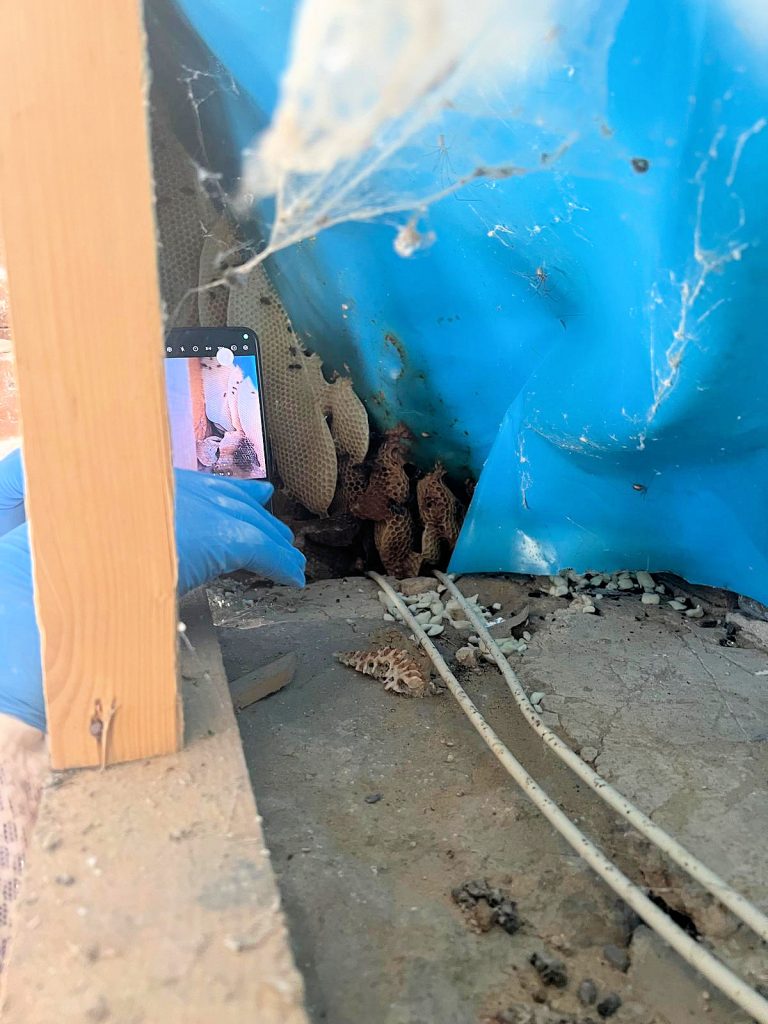
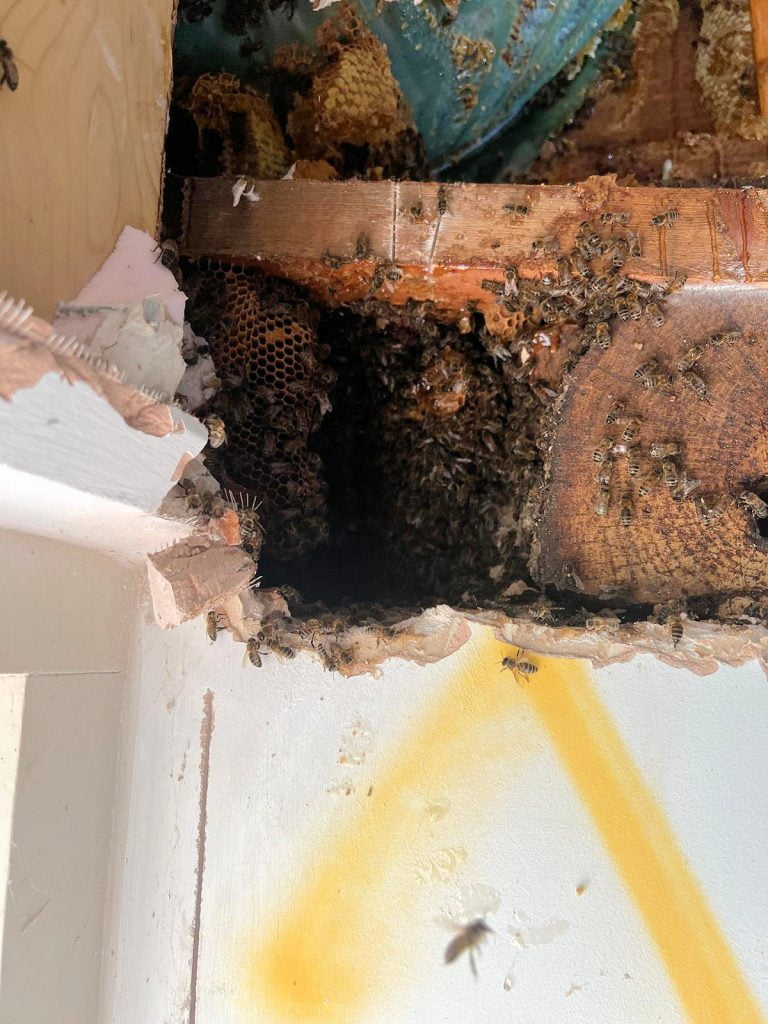
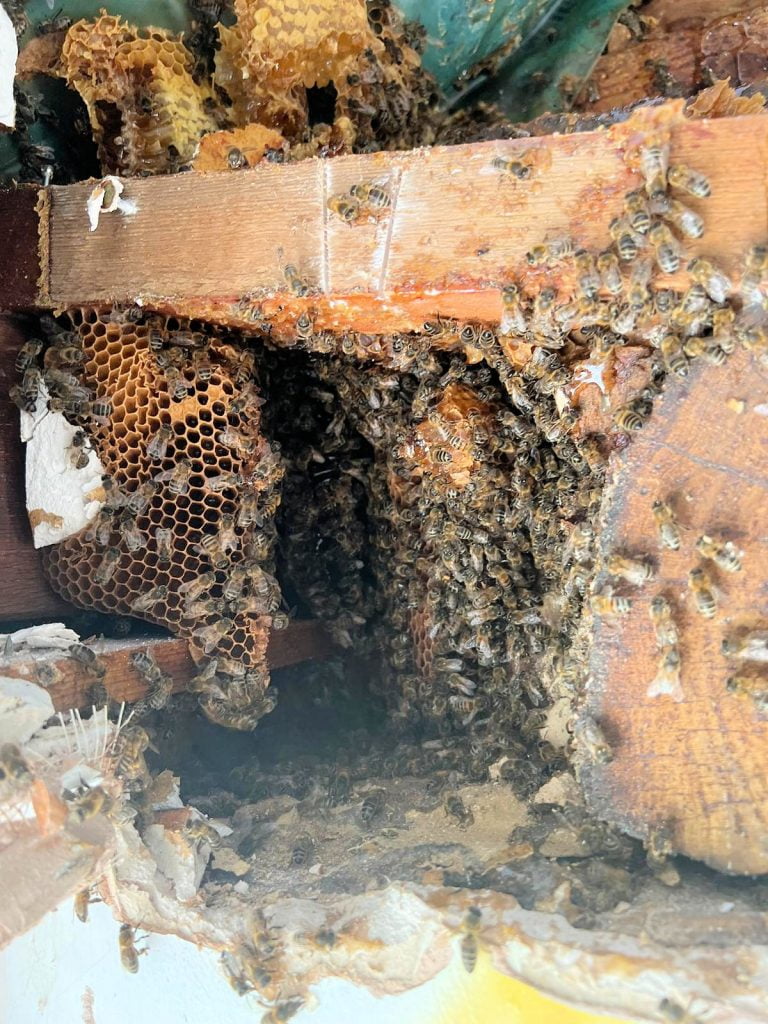
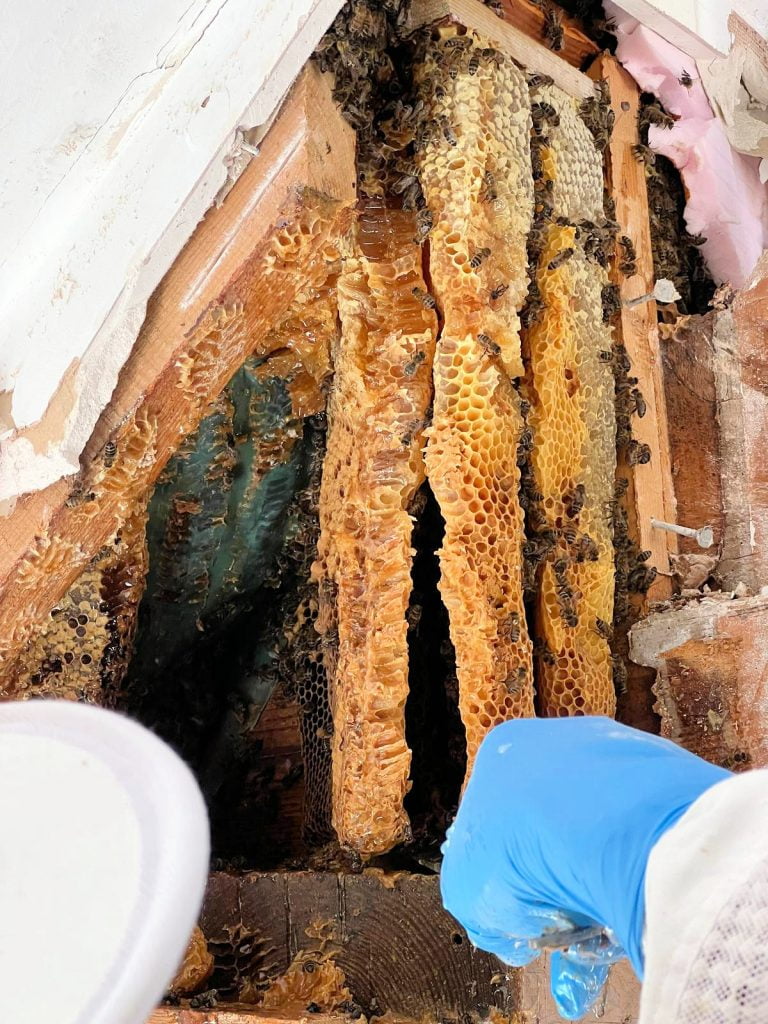
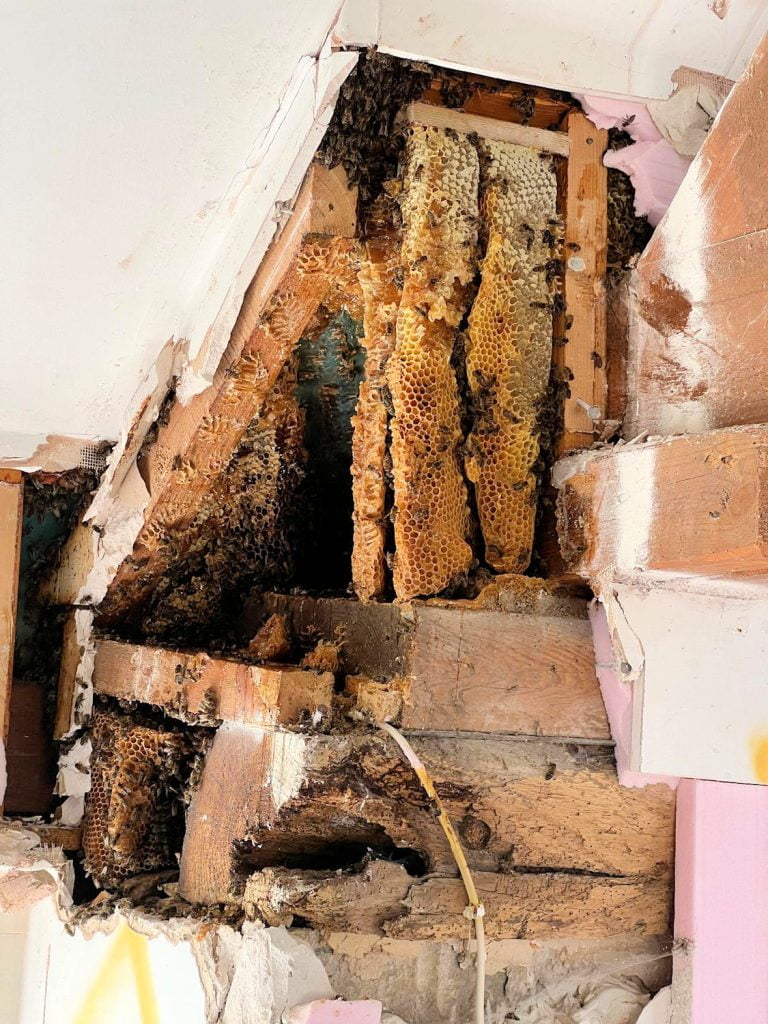
Once revealed we set about cutting the comb out until we could find some brood to rehome. The bees had built the comb around wiring and across the roof void into the other side of a supporting beam. Surprisingly, despite us tearing their house down they remained calm and continued about their work – although the building did fill with more bees as they sought other routes of exit.
We remained vigilant as we approached the brood comb for sighting of a queen and gradually tried to tie brood comb into frames to place in a box. Once we had removed everything between the plasterboard and waterproofing layer it became evident there was little brood, mountains of stores, but a large bulge in the plastic membrane.
David cautiously cut the plastic and peeling it back revealed yet more incredible comb which ran both horizontally down from the roof and vertically alongside the roof struts. It just seemed to keep going!
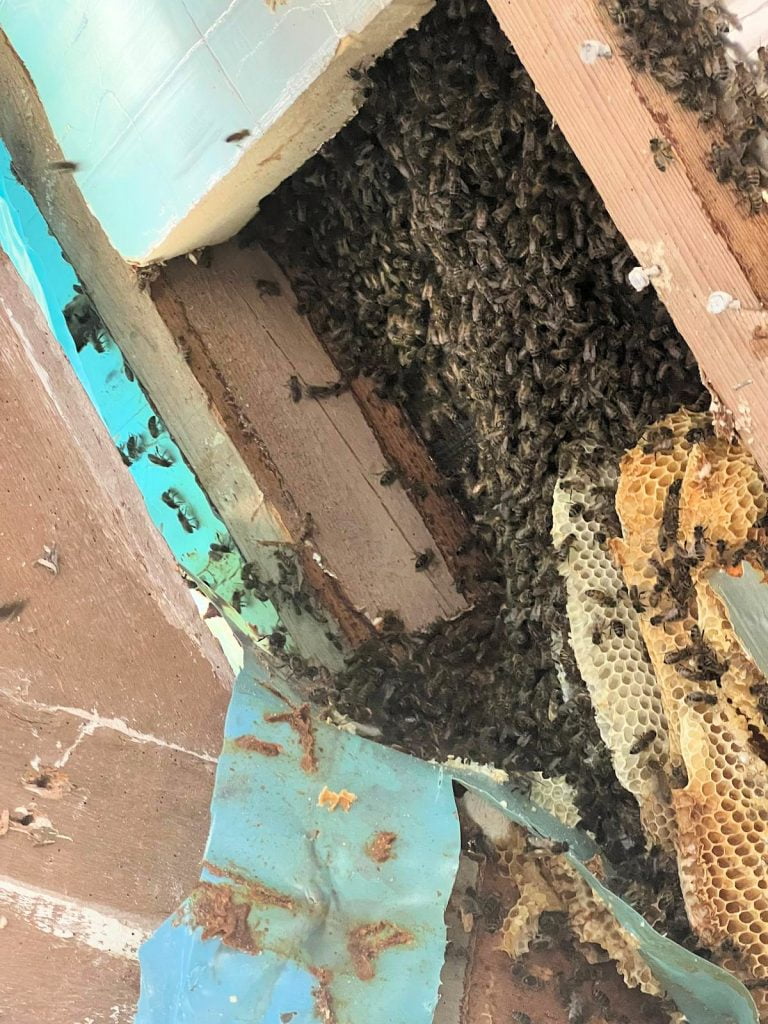

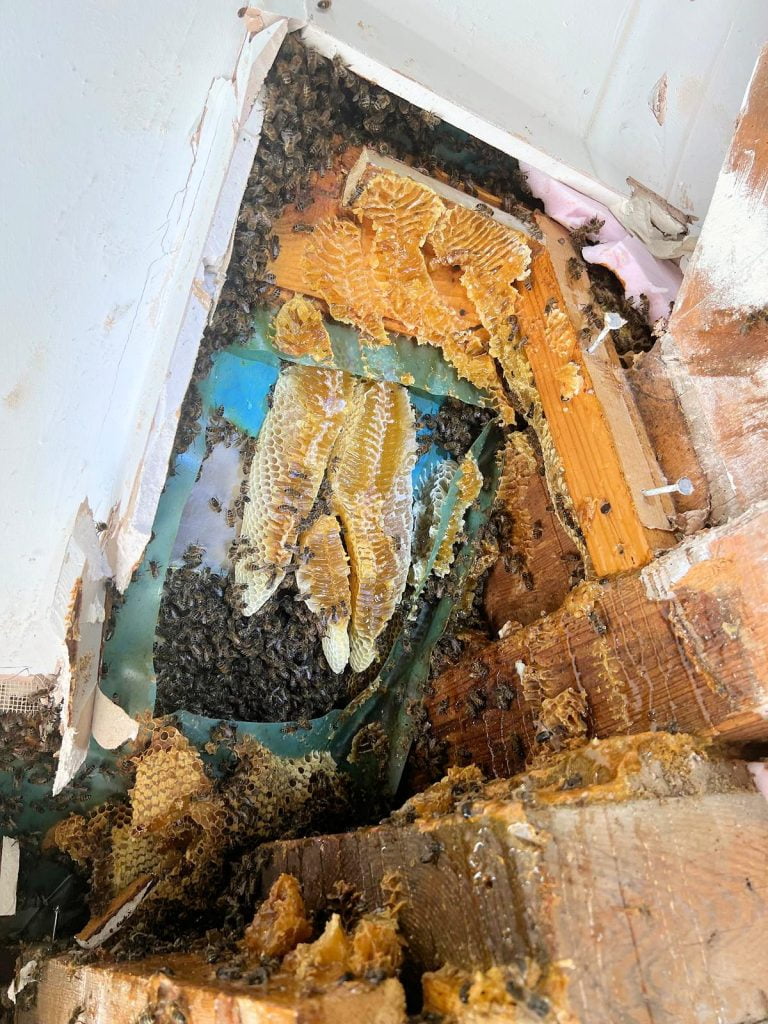
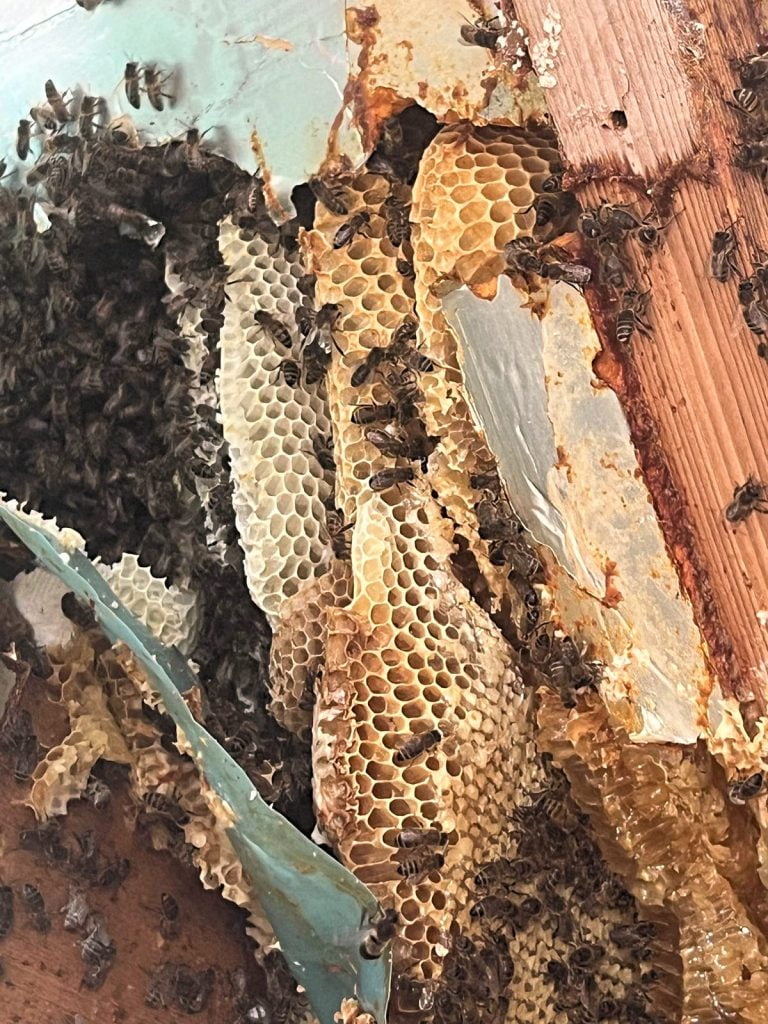
This colony was full of surprises as 3 buckets full of honey comb later we realised the bees had hollowed out behind the roof insulation and moved further upwards.
Once all the comb was removed we set about trying to get the bees to cluster and remove as many as we could. This involved spraying with water to drive them up so the bees could be brushed into a small box and moved into the brood box. Once as many had been collected using this method, David ventured up outside scaffolding to reach the external side of the entrance ( just below roof level) to collect displaced bees trying to find their way back home.
After passing boxes of bees between external scaffolding and through an open window to deposit in the box we then attempted to get remaining bees using a variable suction hoover.
Four beekeepers and four hours later it was a scene of hopeful destruction- the bees home was decimated but hopefully the bees have a chance of continued survival in a new brood box.
It didn’t disappoint in being an adventure- incredible to see how the bees had adapted to create a strong colony within every inch of space possible. Such a strong colony, I did question if bees really need our intervention at all? In this case, I believe they did as without our help the alternative was destruction so building work could continue. Safely housed in the branch apiary, we will watch, wait and hope they will thrive with our support.
Words and Photos Lucy Stevenson